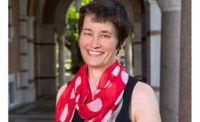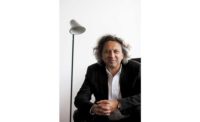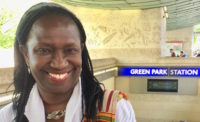In April, the Harvard Graduate School of Design (GSD) named Sarah Whiting its incoming dean, making her the first woman to lead the GSD since its founding in 1936. The post marks a return to Harvard for Whiting, who taught at the GSD early in her career, prior to joining the faculty at Princeton University School of Architecture and becoming dean of the Rice School of Architecture in 2010.
Whiting replaces Mohsen Mostafavi, who stepped down after 11 years, during which he expanded the GSD’s programming and student body. Whiting—a 2011 Women in Architecture award-winner—brings a perspective rooted in her own interdisciplinary journey as an academic, author, and practicing professional at the helm of WW Architecture, the firm she founded with her husband, Ron Witte, in 1999.
Ahead of her arrival at the GSD on July 1, RECORD spoke with Whiting about her plans for the school and the future of architecture education.
After almost a decade at Rice, you take the reins at the GSD next month. What’s on your mind?
It’s bittersweet to leave Rice, because it’s a very busy moment. We’ve just announced a new building annex and almost reached our fundraising goal. But I’m super excited. The congratulations that have poured in are both overwhelming and humbling.
You’ve highlighted Rice’s small size as one of its strengths. How are you approaching the much larger GSD, with some 900 students?
Scaling up is exciting. The GSD is a collection of programs [architecture, landscape architecture, urban planning and design, etc.] as opposed to a single school. The key is understanding how to leverage the size and optimize those programs. But my goals and plans are still developing. I was at the school 15 years ago, so I wouldn’t want to assume I know it well enough now to be able to say, ‘These are the things the school needs.’ I’m looking forward to figuring out what those things are.
What issues should the GSD be discussing, both at Harvard and beyond?
The beautiful thing about architecture is that it touches so many issues. One of the things Mohsen did very well was to bring the GSD into Harvard’s larger orbit. Design is affected by and affects climate change, so from that scale to specific issues like microhousing and the sharing economy, which both have their pluses and minuses—those are the problems that engage the rest of the university in terms of politics, technology, and that engage different parts of the world.
The U.S. doesn’t value design in the same way some other cultures do, but the GSD can help influence that. I think there’s a certain responsibility to help advance the world that comes with such a platform.
Representation is a pressing topic within the field—in academia and in practice—and, recently, a wave of women has stepped into leadership at architecture schools. How do you see your role as a member of this group?
When you mention representation, I confess, my first thought was tools of representing—drawing, models—which is an interesting topic. I don’t automatically think of my gender. I have a very interdisciplinary background that includes urbanism, history, and theory. I think I represent diversity, but maybe intellectual diversity more than anything else.
Traditionally, architecture deans are chosen for either important books they have written or important buildings they’ve completed. How do you see your experience fitting into this tradition?
You mean, what’s my book or what’s my building? Or what I have in lieu of that. I’m one of many people in this field who approach the world through writing and design, through different scales of architecture and urbanism, through history and theory, which I think are two different things, and criticism, which is yet another.
My firm has designed a table, we’ve designed houses, but we’ve also worked on urban plans. The same is true in academia—I’ve taught history, theory focused on a specific writer, studio. So I’ve benefited from a fluidity that is actually still hard to get away with.
Decades from now, what do you hope your legacy at the GSD will be?
I hope it’s a combination of focus—deep projects—and breadth. It goes back to my own profile as someone who does a bit of everything—long-term projects and broader, faster, cross-disciplined projects. If the school can recognize those two tempos, and the value of both tempos, that can generate a lot of important work.







Post a comment to this article
Report Abusive Comment